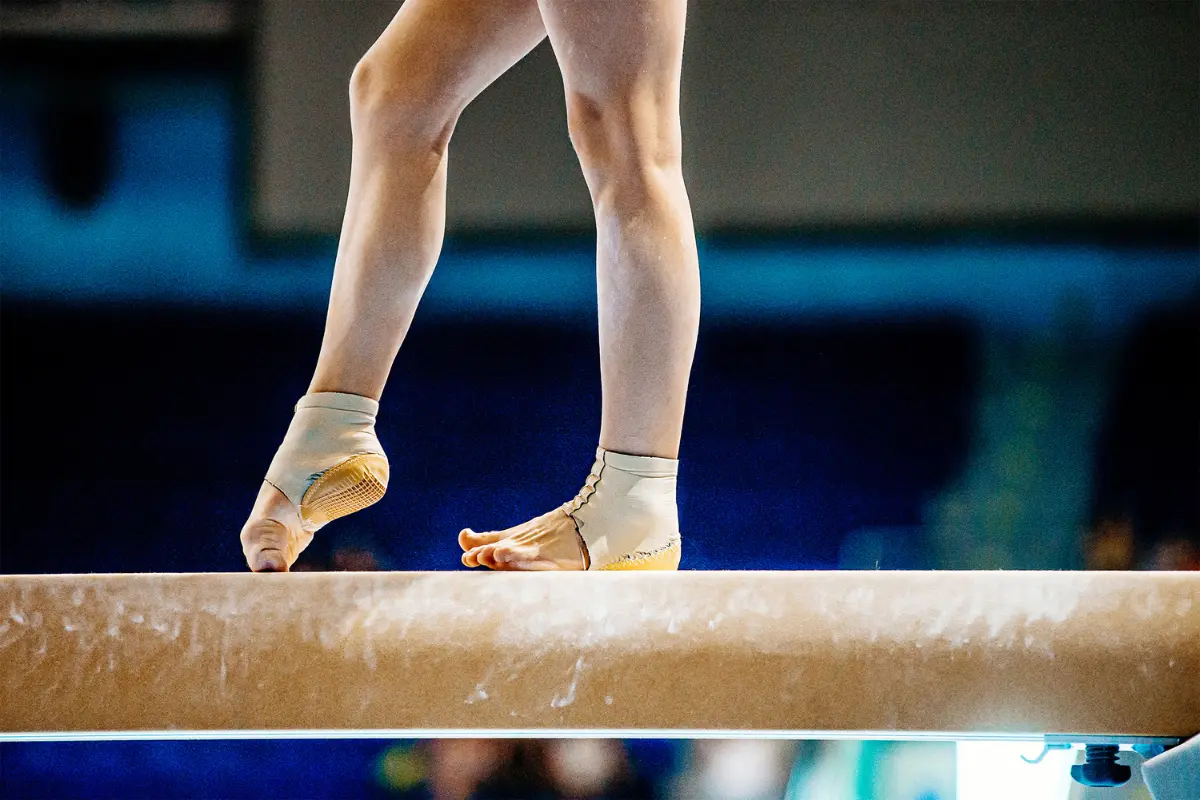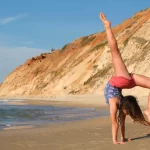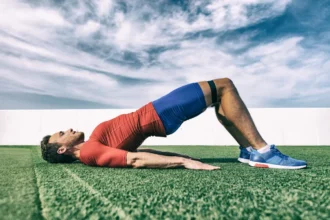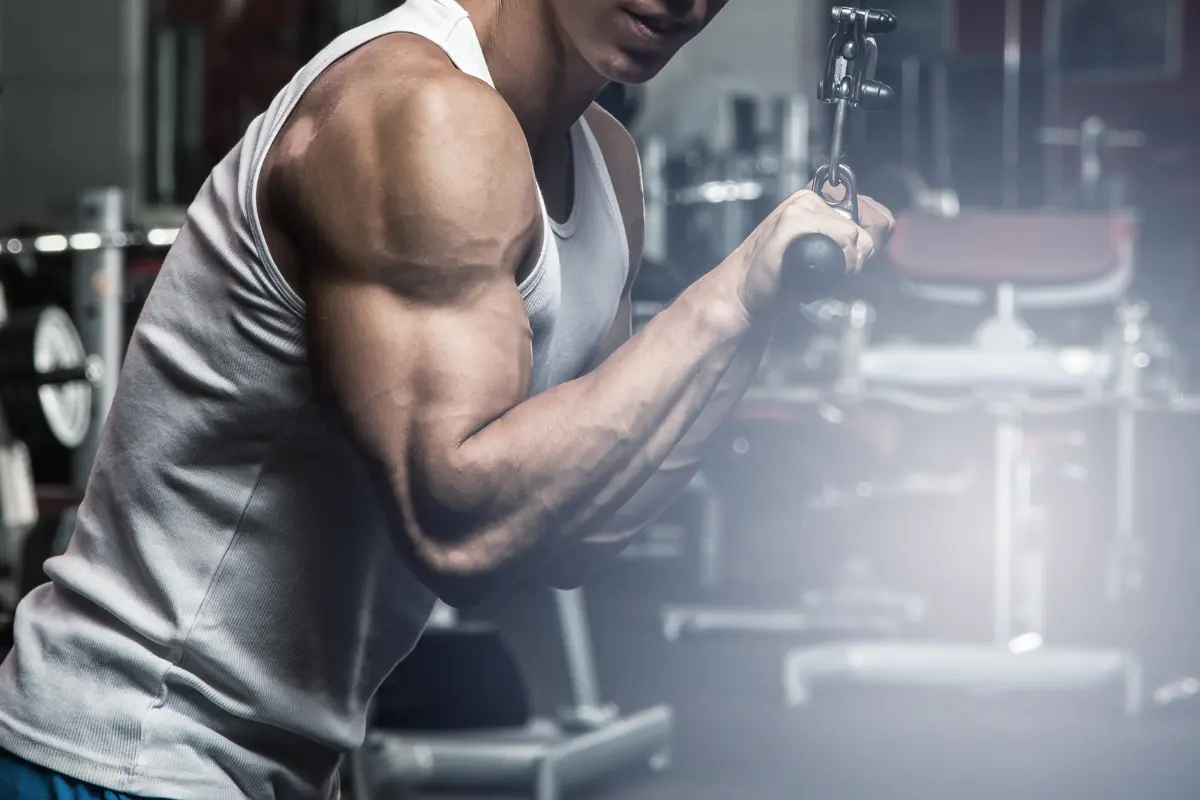From ancient Greek athletes to modern-day yogis grounding themselves in natural elements, there has always been something fundamental about feeling the earth directly beneath our feet.
For gymnasts, going barefoot offers a range of benefits that enhance balance, improve flexibility, and provide better tactile feedback during complex maneuvers.
Better Grip and Control
Performing barefoot offers significant advantages in terms of grip and control. Shoes can sometimes slip or wear out, introducing variables that might compromise a gymnast’s performance.
Bare feet, however, provide a consistent and reliable grip on various surfaces, from the narrow balance beam to the springy floor exercise mat.
Balance Beam:
On the balance beam, the grip is everything. The bare skin of the foot can grip the beam better than any shoe, helping gymnasts maintain stability during intricate maneuvers like turns and leaps. Toes can splay out naturally to provide additional balance, which is crucial for preventing slips on such a narrow surface.
Floor Exercise:
The barefoot grip is equally important during floor routines, where gymnasts perform dynamic movements like flips and spins. The direct contact with the mat allows them to make quick adjustments, helping to prevent falls and maintain a controlled performance throughout the routine.
Enhanced Sensory Feedback
Performing barefoot allows gymnasts to access enhanced sensory feedback. The feet are rich with nerve endings that provide detailed information about the surface they’re in contact with.
This feedback is important for making real-time adjustments when maintaining balance and precision in their movements.
Floor Exercise:
On the floor, gymnasts need to feel every aspect of the mat, from its firmness to its texture. This tactile feedback helps them adjust their movements to maintain balance during rapid changes in direction or speed.
Balance Beam:
On the balance beam, directly feeling the surface is crucial for balance. The tactile feedback helps gymnasts adjust their foot positioning, keeping them steady during both static holds and dynamic movements.
Reduced Risk of Injury
The foot’s natural structure is designed to absorb impact and distribute pressure. Performing barefoot enables gymnasts to use their feet’s natural shock-absorbing capabilities, reducing the risk of injuries such as stress fractures or sprains.
This is especially important for landings, where the ability to spread the toes and adjust quickly can lessen the impact on joints.
Improved Flexibility
Flexibility is a key component of gymnastics, and shoes can often limit the natural range of motion of the feet. Performing barefoot allows gymnasts to fully articulate their feet, enhancing their flexibility and strength.
Tradition and Aesthetics
Gymnastics has a long tradition of barefoot performance, dating back to ancient times when athletes competed without footwear to celebrate their natural form and physical prowess. Modern gymnasts continue this tradition, adding a touch of authenticity to their performances.
Moreover, bare feet highlight the natural lines and movements of a gymnast’s body, making their routines look more visually appealing. Seeing a pointed toe or a graceful arch adds elegance and beauty to the performance. It makes the routine more engaging for the audience.
How Do Gymnasts Protect Their Feet During Competitions and Training?
Gymnastics involves a lot of high-impact activity that puts a lot of stress on the feet. That’s why athletes must prevent injuries and maintain healthy feet. Here’s how gymnasts protect their feet:
1. Taping
Taping is a common method used by gymnasts to provide additional support and stability to their feet and ankles. It helps to reinforce joints, stabilize ligaments, and prevent excessive movement that could lead to injuries such as sprains or strains.
- Ankle Taping: This involves wrapping the tape around the ankle joint to support and stabilize it, reducing the risk of sprains by preventing excessive inversion or eversion of the foot.
- Arch Taping: This technique supports the arch of the foot, preventing it from collapsing and reducing the risk of conditions such as plantar fasciitis.
- Heel Lock Taping: This secures the heel and prevents it from shifting, offering additional stability during landings and jumps, which is crucial for minimizing injury risks.
2. Padding and Gel Inserts
Gymnasts often use various types of padding to cushion their feet and absorb the impact of landings and repetitive movements. This helps to reduce the risk of blisters, calluses, and stress fractures.
- Foot Pads: Soft foam or gel pads are placed inside shoes or directly on the feet to provide cushioning and distribute pressure evenly across the foot.
- Heel Cups: These inserts offer extra support and cushioning to the heel area, absorbing impact and reducing the strain on the heel during jumps and landings.
3. Specialized Footwear
Although many gymnasts perform barefoot, there are scenarios where they use specialized footwear to protect their feet and enhance performance.
- Beam Slippers: These are tight-fitting shoes made of leather or other durable materials that provide better grip and cushioning on the balance beam. They help in maintaining balance and reducing the risk of slips.
- Impact Socks: These socks provide additional grip and help protect the feet from high-impact landings. They also reduce friction, which can prevent blisters and other foot injuries.
4. Gymnastic Chalk
Chalk is used extensively by gymnasts to keep their hands and feet dry and improve grip. This is especially important for maintaining stability on apparatuses like the balance beam and for secure landings during floor routines.
Bottom line
While footwear technology continues to evolve, many athletes find that nothing compares to the age-old practice of training without shoes. This natural approach allows athletes to connect more intimately with their routines, fostering both physical and mental agility.













